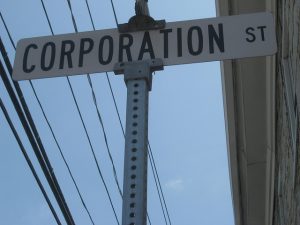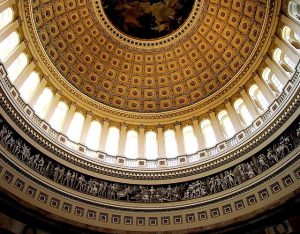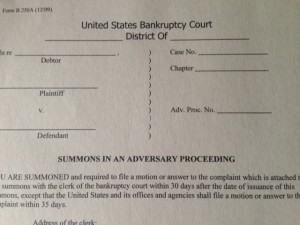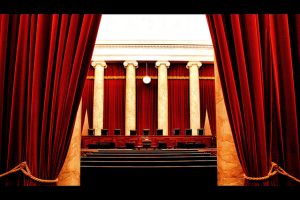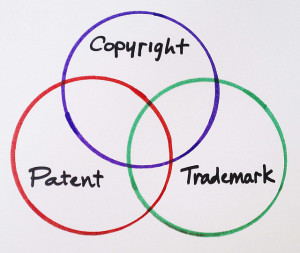Risky Business. When a debtor is a licensee under a trademark license agreement, does it risk losing those license rights when it files bankruptcy? The question had not been answered in a Delaware bankruptcy case until Judge Kevin Gross recently addressed it in the In re Trump Entertainment Resorts, Inc. Chapter 11 case. A lot was riding on the decision, not just for the parties involved but, given how many Chapter 11 cases are filed in Delaware, more generally for other trademark licensees and owners as well.
The Debtors were licensees of trademarks and other rights from Donald and Ivanka Trump, through an entity called Trump AC. Trump AC sought relief from the automatic stay to proceed with a state court action it had filed against the Debtors before the bankruptcy in New Jersey Superior Court, seeking to terminate the underlying trademark license agreement.
In a 21-page opinion issued on February 20, 2015, a copy of which is available by following the link, Judge Gross granted Trump AC’s motion for relief from stay. With the decision, Delaware joined the growing trend of courts giving “veto rights” to trademark owners, similar to those enjoyed by patent and copyright owners, over the assignment — and in some courts, even over the assumption — of trademark licenses.
The Key Bankruptcy Code Section. Judge Gross first examined whether the Debtors could assume the trademark license, which no one disputed was executory, in light of Bankruptcy Code Section 365(c)(1). That section provides:
(c) The trustee may not assume or assign any executory contract or unexpired lease of the debtor, whether or not such contract or lease prohibits or restricts assignment of rights or delegation of duties, if—
(1)(A) applicable law excuses a party, other than the debtor, to such contract or lease from accepting performance from or rendering performance to an entity other than the debtor or the debtor in possession, whether or not such contract or lease prohibits or restricts assignment of rights or delegation of duties; and
(B) such party does not consent to such assumption or assignment.
The Hypothetical Test Applies In Delaware. Judge Gross noted that in In re West Elecs. Inc., 852 F.2d 79 (3d Cir. 1988), the Third Circuit interpreted Section 365(c)(1) to require a court to ask, hypothetically, whether a debtor could assign the executory contract at issue (even if the debtor didn’t seek to assign it). If the debtor couldn’t assign it under applicable non-bankruptcy law, then it couldn’t assume it either. This is the so-called “hypothetical test” interpretation. The Court also held that Section 365(f)(1), which generally overrides anti-assignment provisions in an executory contract or applicable law, is itself subject to Section 365(c)(1)’s carve-back when applicable law makes the identity of the contracting party crucial to the contract.
Does Applicable Law Prohibit Assignment? Having addressed these threshold issues, Judge Gross next considered whether applicable non-bankruptcy law, here federal trademark law, makes a trademark license agreement non-assignable without the trademark owner’s consent. Ultimately, the Court answered yes, and followed the Seventh Circuit’s 2011 decision in In re XMH Corp., 647 F.3d 690 (7th Cir. 2011):
Based on the Court’s research and cases cited by Trump AC, it appears that the substantial weight of authority holds that under federal trademark law, trademark licenses are not assignable in the absence of some express authorization from the licensor, such as a clause in the license agreement itself. See, e.g., XMH, 647 F.3d at 695 (“as far as we’ve been able to determine, the universal rule is that trademark licenses are not assignable in the absence of a clause expressly authorizing assignment”); Miller v. Glenn Miller Prods., Inc., 454 F.3d 975, 988, 992-93 (9th Cir. 2006); N.C.P. Mktg. Group, Inc. v. Billy Blanks (In re N.C.P. Mktg. Group, Inc.), 337 B.R. 230, 235-37 (D. Nev. 2005); 3 McCarthy on Trademarks § 18:43 (4th ed. 2010).
However, as recognized in the Ninth Circuit’s Catapult decision, it is not sufficient to simply recognize a general ban on contract assignment under the applicable nonbankruptcy law, the Court must understand why the applicable non-bankruptcy law bans assignment. As explained by the Seventh Circuit in XMH:
Often the owner of a trademark will find that the most efficient way to exploit it is to license the production of the trademarked good to another company, which may have lower costs of production or other advantages over the trademark’s owner. Normally the owner who does this will not want the licensee to be allowed to assign the license (that is, sublicense the trademark) without the owner’s consent, because while the owner will have picked his licensee because of confidence that he will not degrade the quality of the trademarked product he can have no similar assurance with respect to some unknown future sublicensee.
647 F.3d at 696. “The purpose of a trademark, after all, is to identify a good or service to the consumer, and identity implies consistency and a correlative duty to make sure that the good or service really is of consistent quality, i.e., really is the same good or service.” Id. at 695. Accord 4 McCarthy on Trademarks § 25:33 (4th ed. 2010) (“Since the licensor-trademark owner has the duty to control the quality of goods sold under its mark, it must have the right to pass upon the abilities of new potential licensees.”).
The Court determined that Trump AC had not waived this default rule against assignments in the trademark license agreement. The Court also clarified that a separate consent Trump AC had given for the benefit of the Debtors’ first lien lenders had not been triggered and did not apply to the Debtors. As a result, Trump AC had not consented to assignment or assumption of the trademark license.
What About Exclusive Trademark Licenses? The Debtors argued that the Court should hold the agreement to be an exclusive trademark license, apply patent and copyright license case law suggesting that exclusive licenses should be treated differently, and deny the stay relief motion. The Court’s short answer: no dice.
The distinction between exclusive and non-exclusive licenses is simply not relevant in the trademark context. The general prohibition against the assignment of trademark licenses absent the licensor’s consent is equally applicable to both exclusive and non-exclusive trademark licenses. A trademark licensor would have the same concerns with respect to the identity of the licensee and the quality of products bearing its trademark whether the trademark license is exclusive or non-exclusive. Thus, a rule distinguishing between exclusive and non-exclusive licenses for purposes of assignability makes little sense in the trademark context. Further, trademarks, copyrights, and patents are governed by different sets of laws and influenced by different policy concerns. “[W]hile the basic policies underlying copyright and patent protection are to encourage creative authorship and invention, the purposes of trademark protection are to protect the public’s expectation regarding the source and quality of goods.” Miller, 454 F.3d at 938. The Catapult and Golden Books decisions, while persuasive so far as they apply, simply address different circumstances than are before the Court here.
The Power To Consent. Although it prevailed on the relief from stay motion, Trump AC ultimately reached an agreement with the Debtors, allowing the continued use of the Trump trademarks at the Taj Mahal casino, in conjunction with confirmation of the Debtors’ plan of reorganization. That new agreement provided the “consent” required under Section 365(c)(1)(B) for the Debtors to assume the otherwise non-assignable, and therefore non-assumable, trademark license agreement.
The Stakes Are Raised. Debtors with in-bound trademark licensees better take note of this decision. First it was the Nevada District Court and later the Ninth Circuit in the N.C.P. Marketing case, followed a few years later by the Seventh Circuit in the XMH case. Now, with the Trump Entertainment decision, add Delaware to the list of courts holding that trademark licenses are not assignable without the trademark owner’s consent. In Delaware, California, and other hypothetical test jurisdictions, these licenses will also be non-assumable, giving trademark owners — not their debtor licensees — the winning hand.
Image Courtesy of Flickr by Poker Photos



